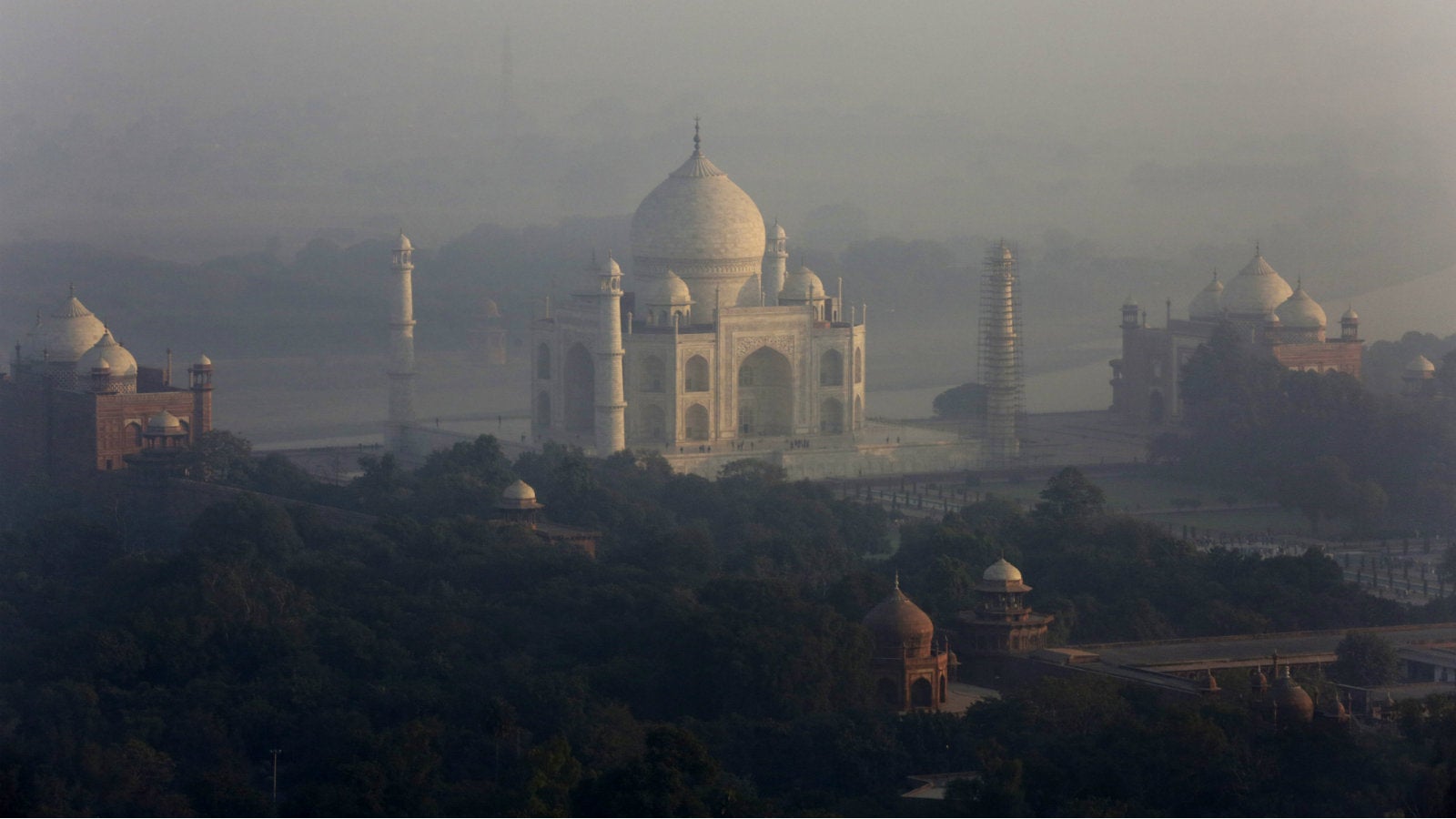The Hindu priest running Uttar Pradesh has no love, or money, for the Taj Mahal
The recently-elected government of the northern Indian state of Uttar Pradesh (UP) has made its intentions clear: Conserving India’s most iconic monument, the Taj Mahal, is not a priority.


The recently-elected government of the northern Indian state of Uttar Pradesh (UP) has made its intentions clear: Conserving India’s most iconic monument, the Taj Mahal, is not a priority.
On June 11, the UP government, led by chief minister Adityanath, presented big plans to preserve and promote the state’s rich cultural heritage in its annual budget for 2017-2018. Among other schemes, it earmarked Rs1,240 crore ($192 million) to develop the ancient, sacred Hindu cities of Ayodhya, Varanasi, and Mathura, as well as Rs800 crore for infrastructure facilities there, according to the Hindustan Times newspaper. It also plans to spend Rs200 crore for a cultural centre in Varanasi.
“Our state has been a carrier of ancient cultural heritage. But our younger generation is gradually distancing itself from the places of cultural and historical importance,” state finance minister Rajesh Agarwal said in his speech. “Our government has formulated schemes for maintenance of places of cultural and historical importance to promote tourism.”
And yet, the Mughal-era mausoleum and UNESCO World Heritage site located in the city of Agra was conspicuously absent from both the finance minister’s speech and the government’s cultural schemes. The Taj Mahal, a 17th century structure built by emperor Shah Jahan, is a top tourist destination in India, drawing some 6.2 million visitors in 2016—both domestic and foreign—and earning around Rs25 crore annually. According to the government of India, some 23% of the foreign tourists visiting the country make a trip to see the monument.
The central government provides funds for the maintenance of monuments, including the Taj Mahal, via the Arcehological Survey of India (ASI), but the monument’s exclusion from the UP budget comes in the backdrop of a sustained campaign by India’s rightwing Hindu extremists who have often denounced it as a symbol of Mughal (read Muslim) domination. Some peripheral outfits have also claimed that it was built on the remnants of a Hindu temple. Adityanath himself, a member of the Hindu nationalist Bharatiya Janata Party, has previously stated that the Taj and its minarets were not a reflection of “Indian culture.”
This is in contrast to previous governments, which had showered a lot of attention on the monument. Former CM Akhilesh Yadav, who had even started a Twitter handle for the Taj Mahal, had earlier referred to it as the identity of India.
The Adityanath government’s decision to sideline the Taj Mahal comes at a time when the monument could use all the help it can get. Decades of bureaucratic neglect and the effects of Agra’s toxic smog have led to the yellowing of its once pristine white marble, and the exposure to moisture from the nearby Yamuna river has created structural issues that threaten its very foundations. Perhaps this is reflected in tourist numbers, too, which have been on the decline in recent years.
While the ASI has tried mud pack treatments to restore the facade of the structure to its former glory, its survival depends on greater care.
But that doesn’t seem likely for now.